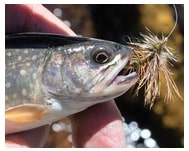
The first question we ask of an image is about context.
Have you ever wondered why you are drawn to certain images? I mean images you can’t take your eyes off of. Images that literally drag you in and stimulate you to recall precious stories from your own memory. The short answer is context, because in imagery, context matters.
The use of context in artful imagery is a huge factor in whether you may actually appreciate a given image (or not). Understanding this one aspect of imagery could lead you to collect art that you will love forever. It may also keep you from buying something that winds up in the attic after a few short years (…&*#@% !…).
The best way to explain why context is so important is to know that context is tightly linked to our own personal memories. Without a memory (or recognition) of a certain subject, your brain decides that it’s abstract and immediately switches to a more complex analytical pathway to make any sense of it.
The more difficult the recognition, the more the brain has to analyze and conceptualize. It can be quite intimidating while the brain interprets the puzzle. And an image with no context is a puzzle, for sure.
 For example, if you’ve never seen a fishing fly, you have no way to describe this “thing.” That tuft of feathers on a curvy thingy may be quite confusing to you. But show you that same fly in the mouth of a fish, and it becomes more clear what it is and what it’s supposed to do.
For example, if you’ve never seen a fishing fly, you have no way to describe this “thing.” That tuft of feathers on a curvy thingy may be quite confusing to you. But show you that same fly in the mouth of a fish, and it becomes more clear what it is and what it’s supposed to do. 
You now have the context necessary to discern the purpose of the fly, and your brain doesn’t have to analyze it as much. (You now know what my favorite hobby is!)
Even though confused by abstractions, our brains are extremely capable of conceptualizing and letting us imagine what that abstraction could be. In fact, some of us love puzzles. We prefer abstract art forms and shapes precisely because it stimulates our brains to conceptualize. It can be exciting to imagine something in a highly abstract painting or photograph that isn’t really there.
I recently had an amusing discussion with a gallery visitor about what she saw in a highly abstract painting hanging on the wall. She swore she saw a horse; pointing out its nose, and mane, and back. Of course, I didn’t see her horse, no matter how hard I tried. Her brain was working hard to make something appear out of an abstraction that she could recognize, and that was great fun for her!
Personally, I like some context in the images I make, such as a log cabin in the woods, or a beautiful sunrise over a quiet river, or even a landscape vista during the peak of Autumn. These are subjects that push the brain to recall peaceful, nostalgic feelings and conjure stories from my own memory (and yours). I think realistic, context-rich art pulls on the heart while abstract art pulls on the brain. And I’d rather have my images pull on the heart.
The featured image “Stones of Any Shape” is a slight departure from my normal style because of its abstraction. I’m using it here as an example of how context matters. There’s not much context here, is there? Just stones arranged in an interesting pattern. The image says nothing about how, where, or why the stones are arranged this way. Is it a road or walkway? A fence? A wall? How large are the stones? What color are they?
Don’t worry, though. Your brain will conceptualize whatever you want to see. And that’s completely okay.
Is it necessary to know those things to enjoy the image? Usually not. You can love a picture without context, it just means your brain has to pre-process it somehow before getting to the “love” part. The other side of this pre-processing situation can also lead to rejection if the context can’t be imagined readily. I have another article you may be interested in that explains the role of mystery in images to either compel a sense of “boring,” “interesting,” or “bizarre”… check it out here.
And when context doesn’t provide the answers we want, we can always let our brains conceptualize the answers that makes the most sense to us, and just have fun with it.
As you look at images online or in a gallery, ask yourself about their context. Is the context obvious or elusive? Starting with that one simple question can often lead to many more questions, and in the process you may learn something about yourself and strengthen your appreciation of art.
If you’d like to read more about how our brains interpret visual abstractions, I’d recommend this article from Salon.
_______________
I first published this article in my newsletter “Under the Darkcloth” on May 26, 2017. To get these articles sent to you personally, just subscribe HERE.
________________
Until next week, please share this email with others who you think might enjoy it.
J.

